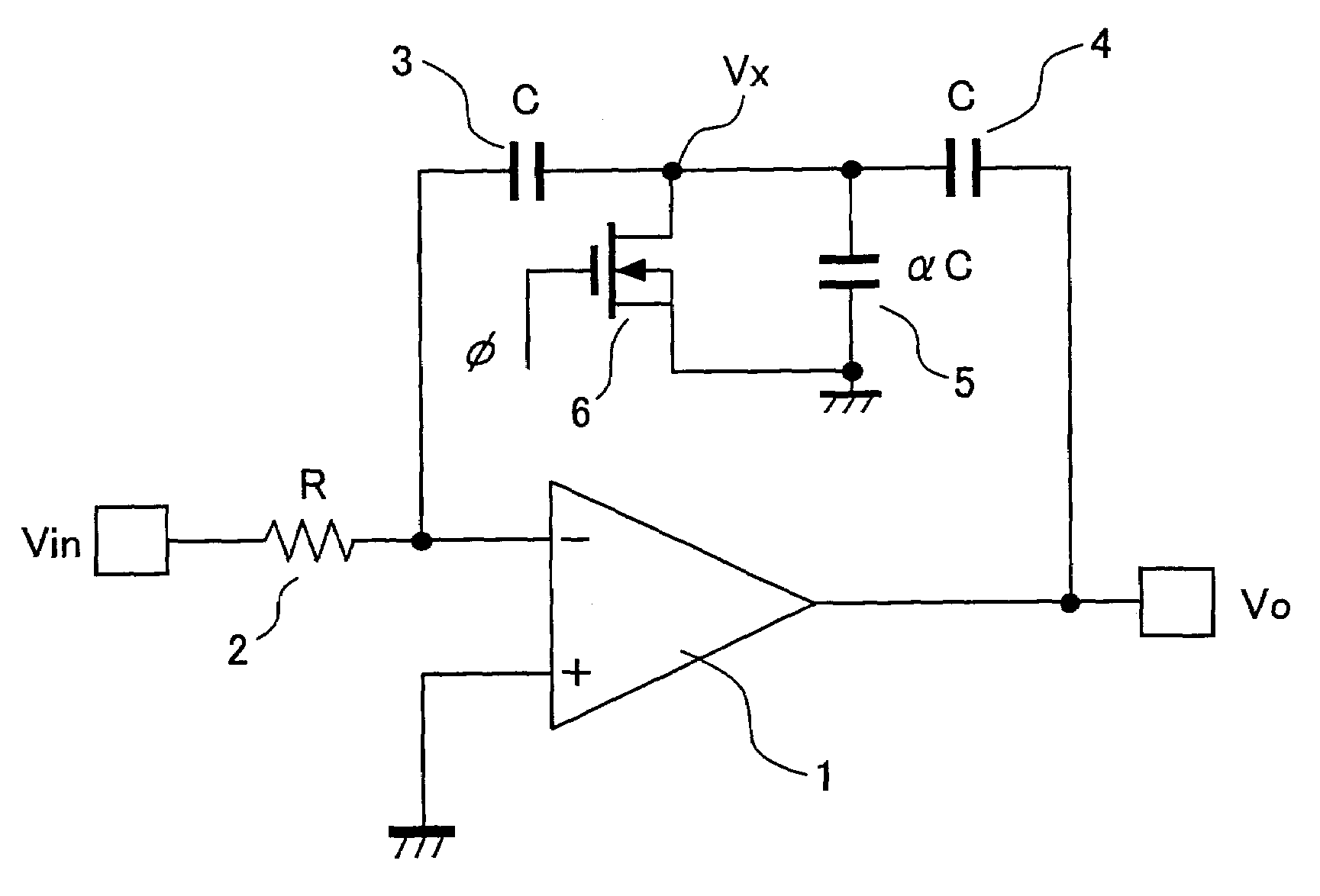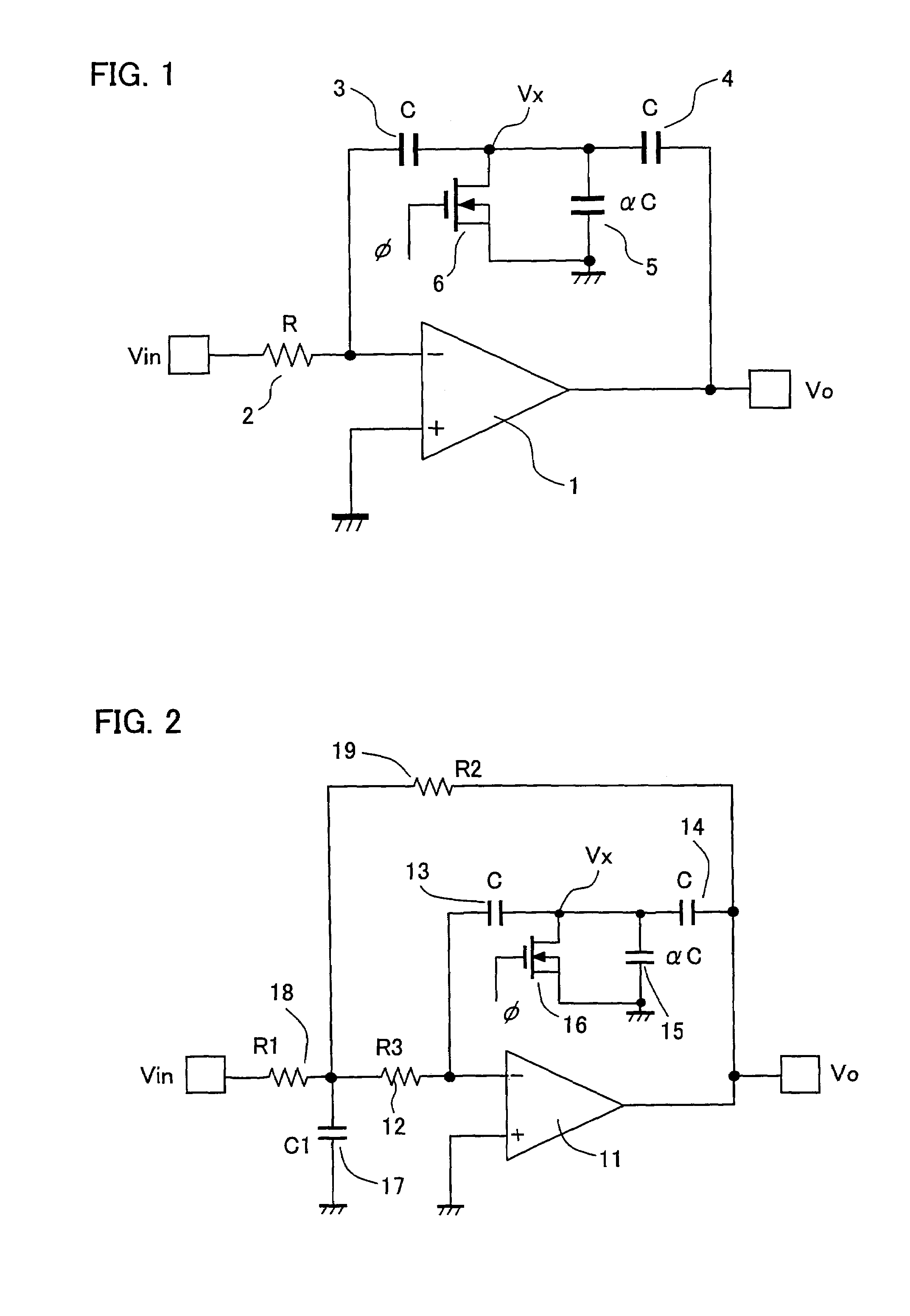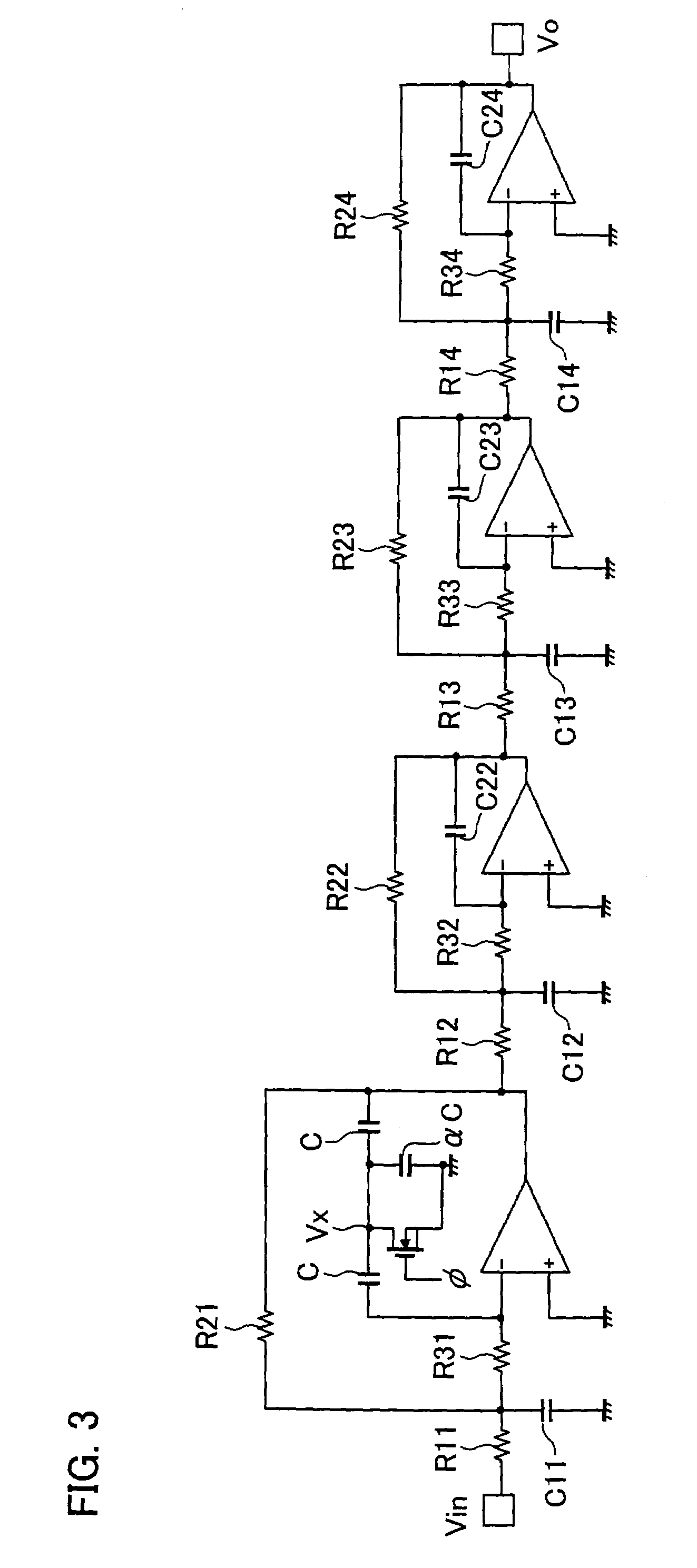Active filter
a filter and active technology, applied in the field of active filters, can solve the problems of difficult control, undesirable capacitance ratio, difficult control, etc., and achieve the effects of reducing the combined capacitance of the capacitive elements, and reducing the capacitance of the feedback section
- Summary
- Abstract
- Description
- Claims
- Application Information
AI Technical Summary
Benefits of technology
Problems solved by technology
Method used
Image
Examples
Embodiment Construction
[0042]The following description deals with one embodiment of the present disclosure with reference to FIG. 1 through FIG. 3.
[0043]FIG. 1 illustrates an integrator circuit to which a main concept of an active filter of the present disclosure is applied. As shown in FIG. 1, the integrator circuit includes an operational amplifier 1, a resistor 2, a plurality of capacitors 3 through 5, an input terminal to which an analog input signal Vin is supplied, and an output terminal from which an output signal Vo is outputted.
[0044]In the integrator circuit, the resistor 2 (having resistance R) is provided between (i) an input terminal to which the analog input signal Vin is supplied and (ii) an inverting input terminal of the operational amplifier 1. The capacitors 3 through 5 are connected to one another so as to have a Tconnection between the inverting input terminal and the output terminal of the operational amplifier 1.
[0045]The resistor 2 and the capacitors 3 through 5 of the operational ...
PUM
 Login to View More
Login to View More Abstract
Description
Claims
Application Information
 Login to View More
Login to View More - R&D
- Intellectual Property
- Life Sciences
- Materials
- Tech Scout
- Unparalleled Data Quality
- Higher Quality Content
- 60% Fewer Hallucinations
Browse by: Latest US Patents, China's latest patents, Technical Efficacy Thesaurus, Application Domain, Technology Topic, Popular Technical Reports.
© 2025 PatSnap. All rights reserved.Legal|Privacy policy|Modern Slavery Act Transparency Statement|Sitemap|About US| Contact US: help@patsnap.com



